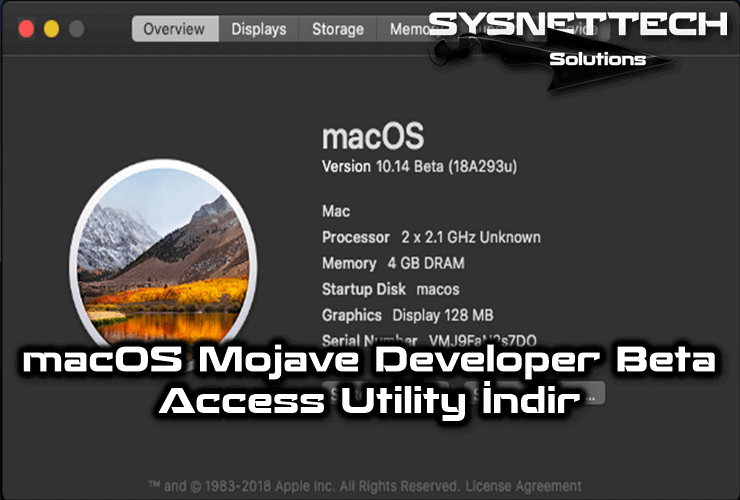

- #DOWNLOAD WIRESHARK FOR MAC OS MOJAVE FULL#
- #DOWNLOAD WIRESHARK FOR MAC OS MOJAVE BLUETOOTH#
- #DOWNLOAD WIRESHARK FOR MAC OS MOJAVE FREE#
As I mentioned before, AirDrop uses both Bluetooth and WiFi, and the nearby device discovery is what Bluetooth is used for. BTLE is a version of Bluetooth Low Energy protocol, which is a Bluetooth implementation for devices where power consumption is an important consideration (eg, IOT devices).

The output was as follows: Note: if the image is too small to read the text, please right click and open the image in new tab.įirst thing I see in the output logs is the BTLE device discovery. For simplicity, check out my cheatsheet schematic below:
#DOWNLOAD WIRESHARK FOR MAC OS MOJAVE FULL#
If you’re wondering what kind of pattern clauses you can use, I described the full list of elements you can include in your predicate in my USB Forensics blog post (Ctrl+F “a predicate” to go straight to it). Some explanation about the command: I am specifying what exactly the specific pattern clauses ( processImagePath and subsystem) need to contain. Log show -predicate "processImagePath contains 'sharingd' & subsystem contains '' -last 30m" So, I’ve decided to first go with the following command: Why sharingd? Sharingd is macOS’s service powering “AirDrop, Shared Computers, and Remote Disc in the Finder”, and I wanted a wider set of logs to look at first. the Bluetooth discovery stage would show as part of category AirDrop, or as a separate process.

At the beginning though I was interested to see all logs connected to sharingd as I wasn’t sure if eg. With time I have noticed now AirDrop wasn’t actually mentioned that often in the eventMessage it was visible in the pattern clause before eventMessage which I later came to understand to be the category. All I knew in the beginning was that I’m looking for entries related to AirDrop, so in the early stages I was experimenting with simple singular predicates like eventMessage contains "AirDrop". I have found the only transferrable (between iOS and macOS) log search mentioned in Sarah’s blog post was checking what kind of AirDrop scans were performed by the machine:Īs you can clearly see above, I only performed Contacts Only scans, looking for devices of people in my contacts to AirDrop with – the other option would be Everyone, where I would be looking for any nearby device with AirDrop switched on.īack to the macOS logs, I’m going to shed some light on my thought process behind creating the queries. Unfortunately, the macOS logs aren’t identical to the iOS ones so it took me a bit of observing and playing around to find the right combination of predicate search terms to find what I needed. The number one source of accessible knowledge on the topic is Sarah Edward’s unified logs blog series, especially the one about AirDrop logs.
#DOWNLOAD WIRESHARK FOR MAC OS MOJAVE FREE#
Therefore, where you see some weird-looking time constraints like last x minutes ( -last Xm), please disregard the value itself and if you’re following the investigation steps on your own machine feel free to amend those time restrictions accordingly.įirst destination to check out for anything regarding a macOS system are the unified logs. When running the log show commands, I therefore put time constraints to make sure I don’t include heaps of old transfers I do not remember the details of. To create a semi-controlled environment, I have purposefully sent some images from both my own device and someone else’s device to my MacBook (iOS -> macOS). Seeing that analysis inspired me to take a look at what these artefacts will look like in macOS. I’ve only seen the slides but they are very informative on their own so make sure to check that out. Continuity allows you to answer phone calls and SMS on devices different than your phone, easily share websites between browsers on different devices, use your iPad as a monitor for your Apple computer, use your iPhone as a camera for your laptop, send and receive files through AirDrop… This list is not exhaustive – if you’re interested in the full range of Apple’s Continuity capabilities make sure to check their website.Ī great rundown of forensics artefacts produced by AirDrop in iPhones was presented by Heather Mahalik and Sarah Edwards in their ‘The Cider Press: Extracting Forensic Artifacts from Apple Continuity’ presentation. AirDrop is part of Apple’s Continuity service – a group of functionalities designed to provide a seamless user experience between multiple Mac devices. The nearby devices discovery is done using Bluetooth, then the file transfer itself is completed over WiFi. Let’s start with the basics: what is AirDrop? It’s a file-sharing service in macOS and iOS which uses both Bluetooth and WiFi to transfer files from one Apple-made device to another.


 0 kommentar(er)
0 kommentar(er)
